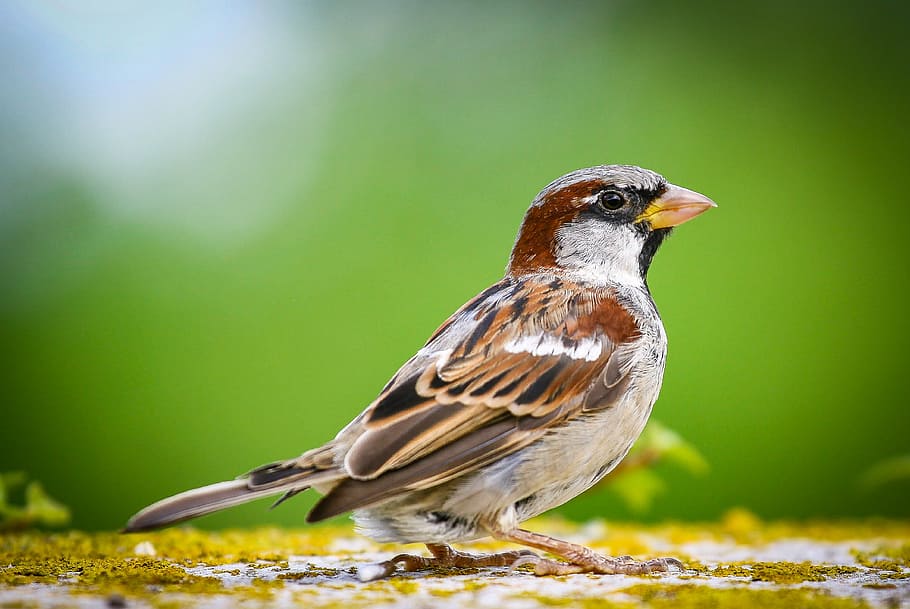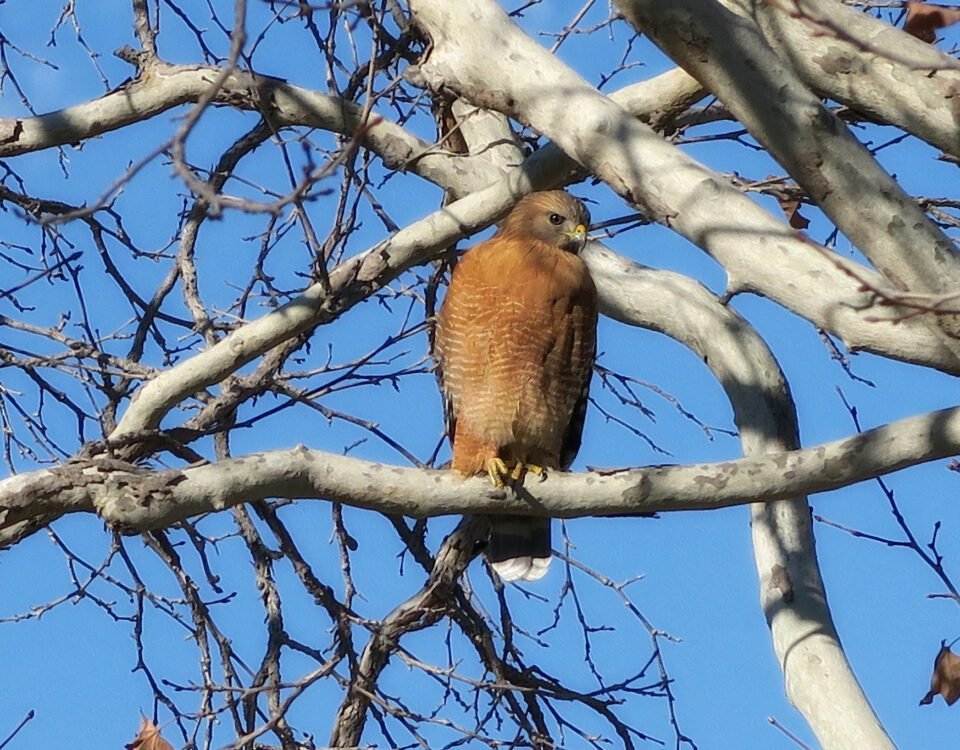


Do Birds Hibernate? Understanding Birds Winter Behaviour
November 12, 2023


Do Hummingbirds Migrate in Flocks or Alone? ANSWERED
November 13, 2023Sparrows are small, chirpy birds common in many parts of the world. They are known for their lively nature and pleasant songs. One interesting aspect about these tiny birds is how long they live. This varies depending on the type of sparrow, where they live, and the challenges they face in their environment.
Sparrows typically have a lifespan ranging from 3 to 5 years in the wild. However, this can vary based on species, environmental conditions, and predator threats. In captivity, sparrows can live longer, often exceeding 5 years, due to better protection and consistent food supply.
Understanding the lifespan of sparrows helps us learn more about these birds and their roles in nature. Let’s dive into the world of sparrows to discover how long they typically live and what influences their longevity.


House Sparrow
Related Read: Sparrow Spiritual Meaning (+ Dreams, Spirit, Power & Totem)
Average Lifespan On Various Sparrows
With their diverse species, sparrows exhibit varying lifespans influenced by their environment, diet, and species-specific traits.
While some species thrive in urban settings, others adapt to wilder habitats, affecting their longevity. Here’s a look at the lifespan of various sparrow types:
- House Sparrow: Commonly found in urban areas, the House Sparrow typically lives around 3 to 5 years, though some can live up to 13 years in favorable conditions.
- Tree Sparrow: Preferring woodland edges and hedgerows, Tree Sparrows generally have a shorter lifespan, averaging around 2 to 3 years in the wild.
- American Tree Sparrow: Native to North America, these sparrows can live up to 7 years, but most have a shorter lifespan due to harsher environmental conditions.
- Eurasian Tree Sparrow: Similar to its American counterpart but found in Europe and Asia, its lifespan averages around 3 years.
- Chipping Sparrow: A North American native, the Chipping Sparrow often lives about 3 years, though some individuals can survive longer in secure environments.
- Song Sparrow: Known for their melodious voice, Song Sparrows typically live around 2 to 3 years in the wild, but this can extend up to 6 years in less hostile settings.
The Oldest Recorded Lifespan Of A Sparrow
In 2017, ornithologists were surprised to recapture a Rufous-crowned Sparrow, which they had initially banded in June 2011 when it was approximately a year old. This discovery revealed that the Rufous-crowned Sparrow was about six years old, setting a record as the oldest known sparrow in North America and, arguably, globally.
While various sparrow species typically have a lifespan of up to five years, either in the wild or captivity, there are notable exceptions.
The White-throated Sparrow, for example, usually lives up to four and a half years in captivity. On the other hand, the Eurasian Tree Sparrow generally has a shorter lifespan in captivity, averaging around two and a half years. Interestingly, some sparrows have been known to live up to six or even eight years in controlled environments.
Causes Of Sparrow Death
Sparrows often meet their demise primarily due to diseases, which is the leading cause of their death. This is closely followed by predation, impacts on human-made structures, and lack of food. Interestingly, one of the frequent reasons for sparrow fatalities in North America is collisions with vehicles.
Additionally, other factors contributing to their mortality include hunting and accidental electrocutions, especially when they perch on power lines, a favored spot for them to observe their surroundings uninterrupted.
Why Do Sparrows Have A Relatively Shorter Lifespan?
Sparrows generally experience a shorter lifespan due to their petite size and light build, which leaves them susceptible to various threats in nature.
Our findings indicate that sparrows are designed more for agility than longevity. Their compact wings are not suited for prolonged flights or covering vast distances. Additionally, their rapid metabolism necessitates constant feeding.
Sparrows aren’t picky eaters, often consuming seeds and insects, making them more prone to toxins or getting poisoned by environmental substances.
These characteristics collectively contribute to these birds’ relatively brief life expectancy.


sparrow
How Long Does A Sparrow Survives In The Wild?
Sparrows are often considered to have a relatively long lifespan for birds of their size, with some species living beyond 10 years. However, the average lifespan for wild sparrows is about 3 years, primarily due to high mortality rates in their early life.
In fact, only around 20% of young sparrows survive to adulthood. Those that do make it past youth have a survival rate of 45 to 65% in the wild, significantly higher than their younger companions.
The house sparrow, native to Eurasia and Africa and now found worldwide, provides the most data on sparrow lifespans. These sparrows can live up to 13 years in the wild, with exceptional cases of individuals living nearly 20 years, although most do not typically reach this age.
How Long Does A Sparrow Survive In Captivity?
In captivity, sparrows often have a significantly longer lifespan than their wild mates, thanks to controlled environments that provide consistent food sources, protection from predators, and the absence of many natural threats.
The average lifespan of sparrows in captivity can vary depending on the species, care, and environmental conditions. Generally, it extends to around 5 to 10 years, with some individuals living even longer.


The extended lifespan in captivity is primarily due to reduced stressors like food scarcity, predation, and harsh weather conditions that they commonly face in the wild.
Additionally, access to veterinary care and a diet tailored to their nutritional needs contributes to their increased longevity. This controlled environment allows for a more stable and secure life, enhancing their lifespan.
However, it’s important to note that the quality of care and the specific species of sparrow play crucial roles in determining their longevity in captivity.
Factors Affecting A Sparrow’s Lifespan
A sparrow’s lifespan is influenced by various factors, ranging from environmental conditions to biological challenges. These factors play a significant role in determining how long these small birds can survive in both the wild and captivity.
Toxic Substances
Exposure to toxic substances, including pesticides and pollutants, can significantly reduce a sparrow’s lifespan. These toxins can accumulate in their bodies, leading to various health problems and mortality.
Environment
The surrounding environment influences their survival, including urban or rural settings and human activity. Urban environments, for instance, might offer more food but also more hazards.
Weather Conditions
Extreme weather conditions, such as harsh winters or scorching summers, can impact a sparrow’s survival, affecting their ability to find food and shelter.
Food Availability
Access to food resources significantly affects a sparrow’s health and longevity. A steady food supply can enhance survival, while scarcity can lead to malnutrition and death.


Food
Predation
Predation is a major threat to sparrows, especially from cats, birds of prey, and other animals. Predation risks vary depending on the habitat and the presence of predators.
Disease and Parasites
Diseases and parasites can severely impact a sparrow’s health, leading to a reduced lifespan. These can spread rapidly in dense populations or unsanitary conditions.
Collisions
Collisions with vehicles and windows are common in urban environments and can significantly cause sparrows’ death.
Type of Habitat
The type of habitat, whether it’s urban, rural, forested, or open fields, influences a sparrow’s survival by affecting food availability, predation risks, and shelter.
Migration
The risks and stresses associated with long-distance travel can impact migratory sparrow species’ lifespan. Migration exposes them to various threats, including exhaustion, predation, and changing environments.
Conclusion
In summary, sparrows generally have a longer lifespan in captivity than their wild counterparts. However, accurately determining their exact lifespan is challenging, as tracking them from birth to death in their natural habitat is difficult. The lifespan of sparrows in captivity can be precisely measured, providing more reliable data.
Regardless of their typical lifespan, various external factors can negatively impact the life expectancy of sparrows. As a bird lover, it’s essential to take steps to eliminate these risks and ensure their safety. It’s crucial to be responsible and avoid actions that could harm sparrows.



